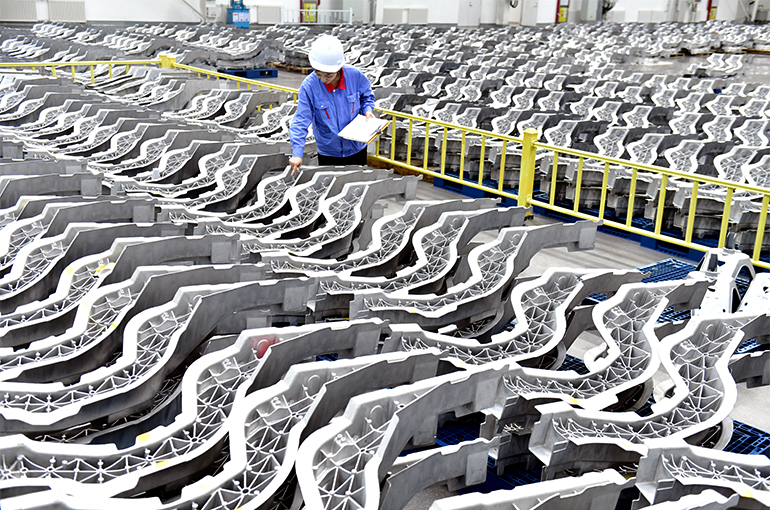 China’s Factory Activity Falls to Lowest in August Since February, NBS Data Shows
China’s Factory Activity Falls to Lowest in August Since February, NBS Data Shows(Yicai) Sept. 2 -- Activity in China’s manufacturing sector shrank the most last month since February, extending the contraction to a fourth straight month, as production slowed as a result of seasonality and extreme weather.
The manufacturing purchasing managers’ index came in at 49.1 last month, compared with 49.4 in July and 49.5 in both June and May, according to data the National Bureau of Statistics released on Aug. 31. February’s figure was 49.1. A reading below 50 indicates contraction.
By contrast, the Caixin manufacturing PMI, a widely watched private benchmark published today, rose to 50.4 last month from 49.8 in July. The Caixin PMI tracks around 650 businesses that are generally smaller, privately owned, and export oriented, while the official PMI surveys 3,200 companies that are mostly state owned.
The off-season for production and extreme weather conditions in China, including high temperatures and heavy rainfalls, were behind the fall in the official manufacturing PMI, said Zhao Qinghe, a senior NBS statistician.
New orders fell to 48.9 last month from 49.3 in July, while production dropped to 49.8 from 50.1, indicating an output shrinkage. Gauges for key raw material prices and producer prices dropped to 43.2 and 42 from 49.9 and 46.3, respectively.
Factory activity contracted faster in August, indicating that the downward pressure on the economy increased and the imbalance caused by higher supply than demand became more pronounced, said Zhang Liqun, a special analyst at the China Federation of Logistics and Purchasing.
The need to significantly enhance counter-cyclical adjustments in macroeconomic policy has grown, notably expanding government investment in public goods, to boost business orders and swiftly reverse the market-driven contraction in demand and the economic downturn, Zhang noted.
Even though there have been fluctuations in the Chinese economy, the overall development trend has remained stable thanks to its solid foundations, said Wen Tao, an expert from the China Logistics Information Center.
Thanks to subsidies to counter extreme weather conditions, production, construction, and consumer activities are steadily recovering in various regions, Wen noted, adding that some industries are also about to enter their peak season. Moreover, policies to stabilize the economy and promote growth have intensified, which will result in more tangible effects, he said.
The non-manufacturing PMI rose to 50.3 in August from 50.2 the month before, indicating a slight improvement in business sentiment, NBS data also showed. Business activity inched up to 50.5 from 50, while construction activity fell to 50.6 from 51.2, mainly impacted by the extreme weather conditions.
The composite PMI output index, which is the weighted sum of the manufacturing production sub-index and the non-manufacturing PMI, edged down to 50.1 from 50.2 from the previous month, showing that production and activities continue to experience a modest expansion overall.
Editor: Futura Costaglione